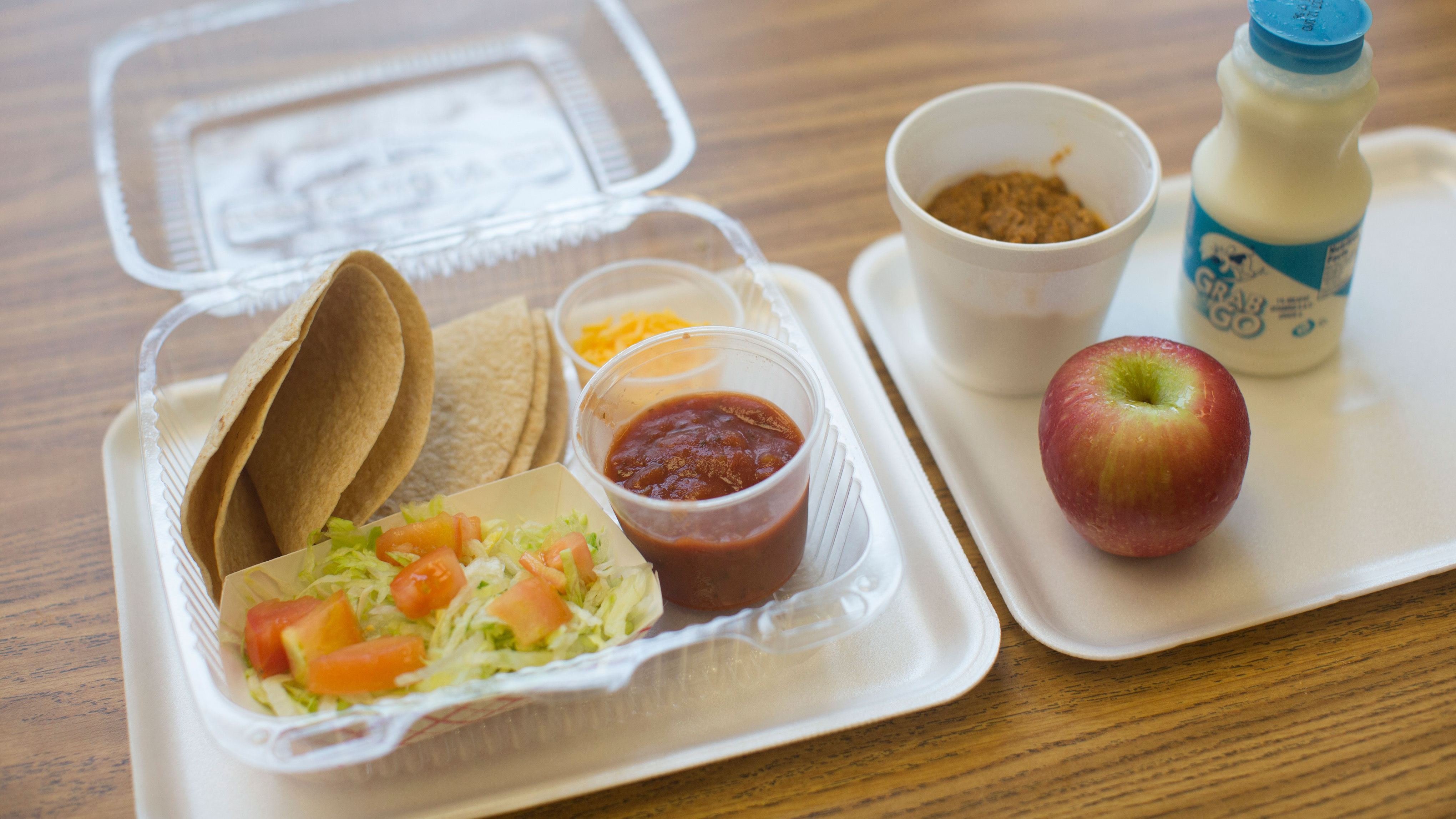8 in 10 Minnesota Voters Support School Food Nutrition Standards
 © The Pew Charitable Trusts
© The Pew Charitable TrustsCafeteria staff prepare school lunches for students.
When he signed the National School Lunch Act 69 years ago this month, President Harry Truman said that the law would go a long way toward “strengthening the nation through better nutrition for our school children.” As schools across the nation continue to implement the updated nutrition standards that took effect in 2012, a statewide poll from the Kids’ Safe and Healthful Foods Project finds that 82 percent of Minnesota voters overall and 76 percent of those with children in public school support those standards.
Pollster Memo (PDF) | Full Results (PDF)
Support for Nutritious Food in School Is Overwhelming
We asked:
Do you think that serving nutritious foods in schools is very important, somewhat important, not that important, or not important at all in helping to ensure that children are prepared to learn and do their best in school?
| Total Important (%) | |
| Registered voters | 97 |
| Parents of K-12 public school students | 96 |
Source: Minnesota School Nutrition Survey, February 2015
Specific parts of the updated nutrition standards garnered as much or even higher levels of support from Minnesota voters than the standards broadly. Nearly all voters and public school parents say school lunches should include a serving of fruits or vegetables, and more than 7 in 10 believe schools should provide whole-grain foods with every meal and should limit the amount of salt.
Key Nutritional Improvements Receive Strong Support
We asked:
Do you think public schools should be required to do the following with every school meal? And do you feel strongly about that?
Include a serving of fruits or vegetables
| % Yes | (Strongly) | |
| Registered voters | 96 | (90) |
| Parents of K-12 public school students | 94 | (86) |
Provide foods made from whole grains
| |
% Yes | (Strongly) |
| Registered voters | 74 | (52) |
| Parents of K-12 public school students | 73 | (48) |
Limit the amount of salt
| |
% Yes | (Strongly) |
| Registered voters | 79 | (55) |
| Parents of K-12 public school students | 72 | (46) |
Source: Minnesota School Nutrition Survey, February 2015
Nutrition standards for meals served under the National School Lunch Program have been updated regularly since the program’s inception in 1946. Since the start of the 2012-13 school year, lunches and breakfasts have included more lean protein, low-fat dairy products, and fruits and vegetables, while avoiding excess fat, salt, and calories. As of December 2014, the vast majority of Minnesota schools (98.8 percent) are certified as meeting these healthier standards.
Support for updated nutrition standards for school meals was seen across the ideological spectrum, with 75 percent of Republicans, 76 percent of independents, and 91 percent of Democrats in favor.
Seventy-five percent of voters and 69 percent of parents also support the USDA’s new “Smart Snacks in School” rule, which took effect in the 2014-15 school year and sets basic limits on fat, salt, sugar, and calories in food and drinks sold in vending machines, at snack bars, and on a la carte cafeteria menus.
Our survey also asked whether certain changes beyond those needed to meet national standards would further improve school meals. More than 7 in 10 voters and public school parents think meals would be better if prepared in the cafeteria’s kitchen instead of being prepackaged and reheated. And 70 percent of voters and 65 percent of public school parents believe that offering a variety of fruits, vegetables, and whole grains improves school menus. Although many schools have made such adjustments to their menus and cooking approaches, others are hampered by outdated or limited kitchen facilities. In a survey of school food service directors, 96 percent of Minnesota districts reported needing at least one piece of equipment—at a median cost of $47,000 per school—to better serve nutritious foods.
More about the poll
The Minnesota statewide poll was conducted by Public Opinion Strategies and Hart Research Associates for the Kids’ Safe and Healthful Foods Project, a collaboration between The Pew Charitable Trusts and the Robert Wood Johnson Foundation. Data were collected via landline and cellular telephone surveys Feb. 17-19, 2015, among 500 registered voters, including 200 parents or guardians of children in K-12 public or charter schools. The margin of error on the sample of 500 is plus or minus 4.4 percentage points, and the margin of error on the sample of 200 is plus or minus 6.9 percentage points.
The poll is the latest in a series of state surveys conducted for the project. Each has revealed overwhelming support for the nutrition standards that are in place for school lunches and breakfasts as well as the snack food and drinks sold separately. Similarly, a June 2014 poll showed strong support for these policies among K-12 parents nationwide.


This video is hosted by YouTube. In order to view it, you must consent to the use of “Marketing Cookies” by updating your preferences in the Cookie Settings link below. View on YouTube
This video is hosted by YouTube. In order to view it, you must consent to the use of “Marketing Cookies” by updating your preferences in the Cookie Settings link below. View on YouTube
Latest from Health





